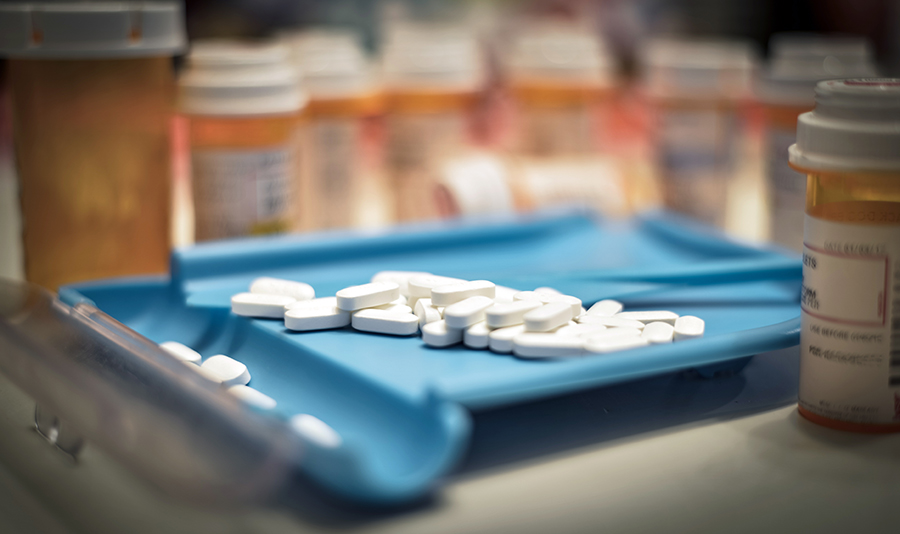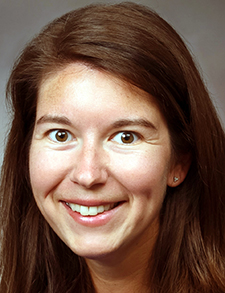 In this workshop, the presenters provided an overview of the diagnosis and management of opioid use disorder (OUD) and an introduction to medication for opioid use disorders (MOUD). The presenters introduced a framework that hospitalists can use when prescribing buprenorphine in the inpatient setting. After discussing the initiation and titration of buprenorphine in hospitalized patients, the presenters walked the audience through several complex clinical situations using case-based small-group discussions.
In this workshop, the presenters provided an overview of the diagnosis and management of opioid use disorder (OUD) and an introduction to medication for opioid use disorders (MOUD). The presenters introduced a framework that hospitalists can use when prescribing buprenorphine in the inpatient setting. After discussing the initiation and titration of buprenorphine in hospitalized patients, the presenters walked the audience through several complex clinical situations using case-based small-group discussions.
The presenters highlighted the prevalence of OUD among hospitalized patients. The rate of opioid-related inpatient stays continues to rise, and it’s crucial that hospitalists can diagnose and treat OUD. The presenters suggest screening all patients for substance use. If patients endorse opioid use, screening should be followed by a nonjudgmental clinical evaluation in which the clinician inquires about frequency, amount, and route of use. The diagnosis of OUD is made using criteria in the Diagnostic and Statistical Manual of Mental Disorders, Fifth Edition.
Many hospitalized patients with OUD experience opioid withdrawal during admission. Hospitalists must be able to recognize and treat opioid withdrawal. Untreated withdrawal often leads to patient-directed discharges. A constellation of symptoms including tachycardia, restlessness, sweating, mydriasis, gastrointestinal upset, and gooseflesh skin, among others, characterizes opioid withdrawal.
Opioid withdrawal can be treated with MOUD (methadone and buprenorphine), full opioid agonists, and symptomatic management. Medications for symptom management include antiemetics, antidiarrheals, clonidine (for anxiety, irritability, and sweating), and diphenhydramine or trazodone (for insomnia). Buprenorphine (a partial opioid agonist), methadone (a full opioid agonist), and other full agonists treat withdrawal by acting on the mu receptor. Symptomatic management can improve patient comfort but does not treat the underlying withdrawal process.
The presenters then gave an overview of the U.S. Food and Drug Administration-approved medications for OUD (naltrexone, methadone, and buprenorphine), highlighting each medication’s mechanism of action and unique characteristics. The remainder of the talk focused on inpatient initiation and management of buprenorphine.
The presenters emphasized that buprenorphine is a life-saving medication and that every dose given can prevent an overdose or other OUD-related morbidity. Buprenorphine is a partial opioid agonist with a very high affinity for opioid receptors—these effects prevent overdose and misuse of the medication. Buprenorphine can lead to precipitated withdrawal if administered when a high level of opioid agonist, such as methadone, fentanyl, or oxycodone, is present. Therefore, patients should be in moderate withdrawal before a traditional buprenorphine induction.
The indications for initiating buprenorphine in hospitalized patients are simple—buprenorphine is indicated in any patient with an OUD diagnosis who is interested in treatment with buprenorphine. Acute liver disease can be a relative contraindication for buprenorphine-naloxone, requiring a slower initiation. Buprenorphine-naloxone should not be initiated in patients with recent methadone use due to the risk of causing precipitated withdrawal.
The presenters provided the following as a sample initiation regimen for a traditional induction, for a patient in moderate withdrawal:
Step 1: Give 4 mg/1 mg buprenorphine-naloxone sublingual
Step 2: Wait 60 to 90 minutes and repeat 4 mg/1 mg dose if still in withdrawal
Step 3: Repeat Step 2 until the patient feels better. A typical Day 1 dose is 16 to 24 mg of buprenorphine
On Day 2, give a morning dose equal to the total dose required on Day 1
The presenters then divided the audience into small groups for case-based discussion. The presenters guided the audience through a discussion of buprenorphine management in more complex clinical situations. The clinical situations discussed included cases of precipitated withdrawal, acute pain, and perioperative management of buprenorphine. The presenters also introduced micro-dosing of buprenorphine as an alternative induction strategy. This strategy can be especially useful in patients with recent fentanyl use or in patients who require full opioid agonists for pain management.
The presenters concluded the session with a discussion on best practices for prescribing buprenorphine on hospital discharge. Patients discharged on buprenorphine must be referred to a local provider who can follow the patient upon discharge. Patients should be discharged with a one- to two-week supply of medication (or until a follow-up appointment). The Consolidated Appropriations Act of 2023 eliminated the need for providers to possess an X-waiver to prescribe buprenorphine; buprenorphine can now be prescribed with a standard DEA license. Training requirements for prescribers go into effect on June 21, 2023, and states’ prescribing and training requirements may differ from federal law.

Dr. Wimberly
Dr. Wimberly (@kate_wimberly) is a med-peds hospitalist and an assistant professor in internal medicine and pediatrics at the University of Kentucky in Lexington, Ky.